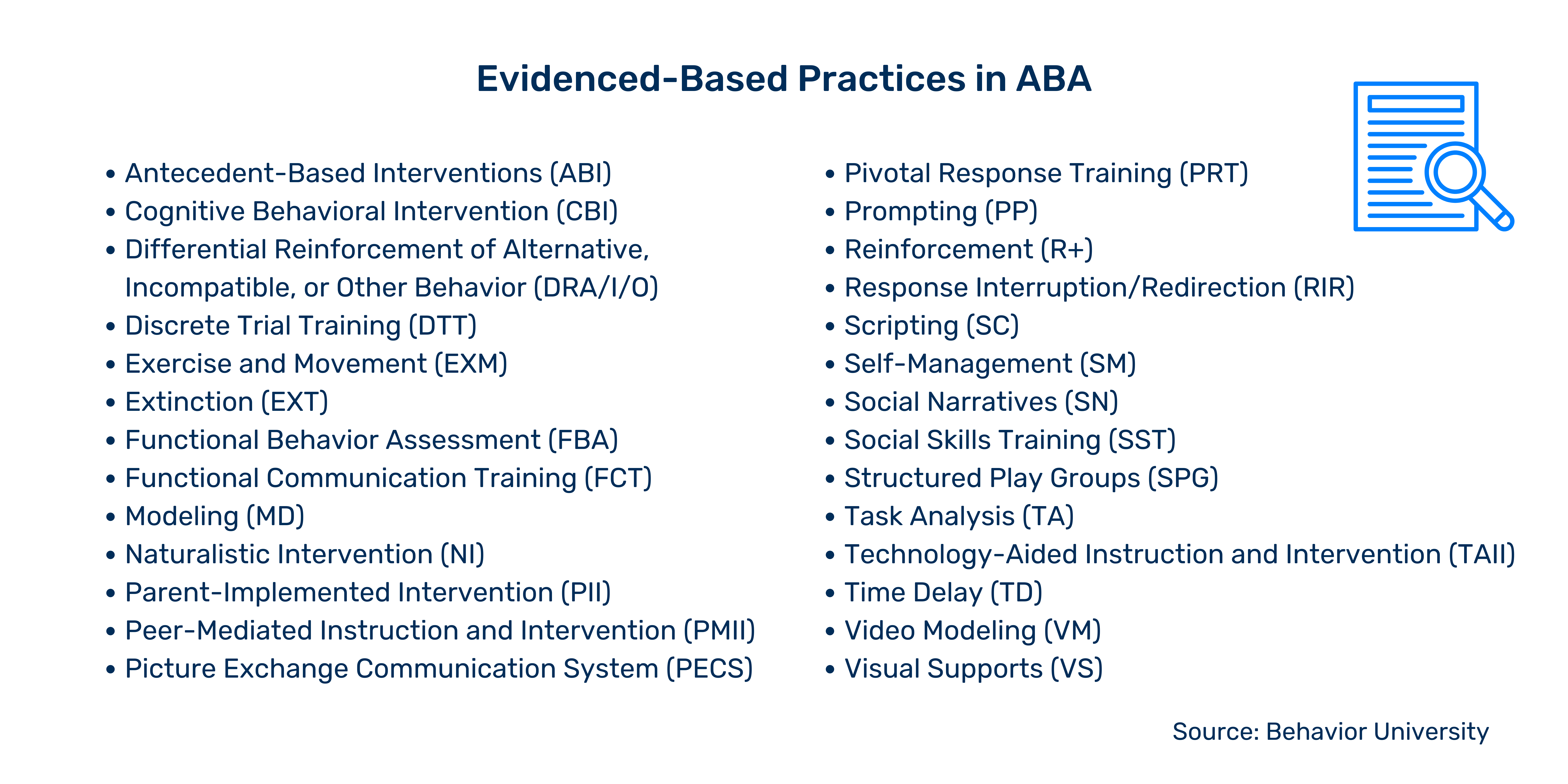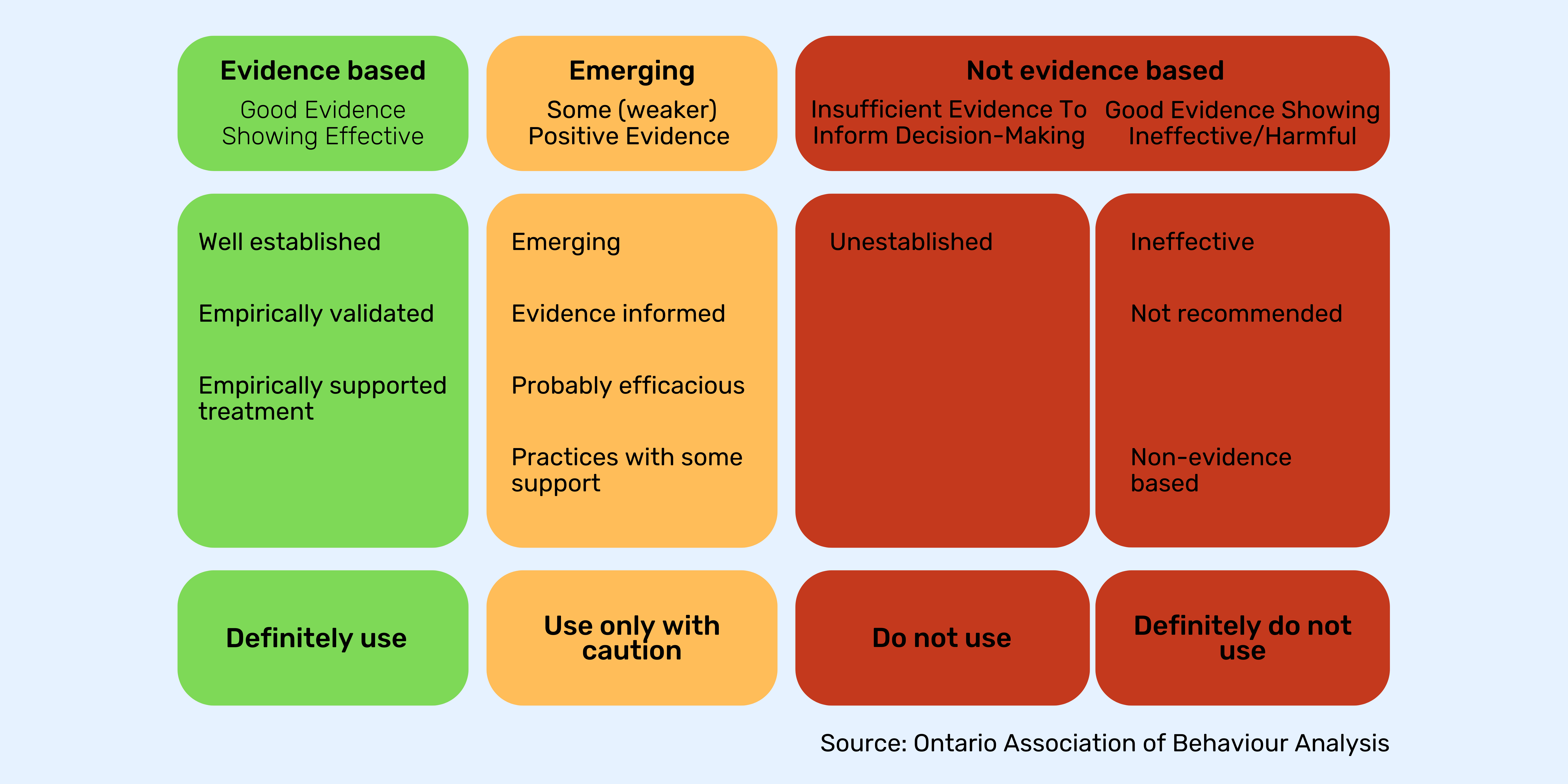Evidence-based practice (EBP) in Behavior Analysis is more than a buzzword; it is the foundation upon which ABA practitioners build effective, ethical, and individualized interventions for their clients by integrating the best available evidence with client values and context, and clinical expertise. This article aims to provide advanced strategies for seamlessly applying EBP as a decision-making framework for your everyday clinical practice.
Understanding Evidence-Based Practice in ABA
“In the absence of this decision-making framework [referring to EBP], practitioners of ABA would be conceptualized as behavioral technicians rather than analysts,” experts explain. This illustrates the significance of EBP in ABA.
The concept of EBP has evolved significantly within the Applied Behavior Analysis field. Early ABA practices were primarily based on empirical observations and experimental analysis. Over time, as the body of research grew, so did the emphasis on grounding interventions in robust scientific evidence. Today, EBP is a dynamic decision-making process that requires continuous learning and adaptation to ensure the best outcomes for clients.
Overall, the field of ABA recognizes 27 evidence-based practices that have been extensively researched and proven effective.

To ensure compliance with evidence-based practices, the Ontario Association of Behaviour Analysis provides a summary of various terms accepted for evidence-based practices and their implications for use, shedding light on when to use or not use the evidence.

Exploring the Components of EBP in ABA
According to the article The Evidence-Based Practice of Applied Behavior Analysis, EBP in ABA involves the integration of three core components: the best available evidence, the client values and context, and clinical expertise. The best available evidence refers to utilizing current, high-quality research findings to inform practice; clinical expertise encompasses the skills and experiences that clinicians bring to their work; while client values and preferences involve respecting and incorporating the individual preferences and cultural values of the clients and their families.
Strategies for EBP Integration by Component
1. Best Available Evidence
Conducting systematic literature reviews is essential for identifying the most relevant and high-quality research. This process involves comprehensive searches using databases and relevant studies, followed by critically appraising the validity, reliability, and applicability of the research findings to your practice
Once you have identified the best available evidence, the next step is to develop evidence-based protocols. Translating research findings into practical, standardized procedures involves creating Standard Operating Procedures (SOPs) that outline evidence-based interventions and training your team to ensure consistent application of these protocols.
For instance, consider a scenario where you implemented an evidence-based intervention for reducing stereotypic behaviors. By following a systematic approach—reviewing literature, developing a protocol, and training your team—you observed a significant decrease in these behaviors, demonstrating the power of EBP.
2. Client Values and Preferences
Engaging clients and their families in the treatment planning process is vital for ensuring that interventions are aligned with their values and cultural backgrounds. Collaborative goal setting involves respecting client values and empowering families to be active participants in the process. This approach increases buy-in and support for the interventions.
Tailoring interventions to individual needs based on client feedback is also crucial. Ensuring that interventions are socially valid and acceptable to clients requires flexibility and a willingness to modify strategies as needed.
For instance, consider a situation where you modified an evidence-based communication intervention to better align with a client’s cultural background. This adjustment not only respected the client’s values but also enhanced the intervention’s effectiveness.
3. Clinical Expertise
Your clinical expertise is invaluable in interpreting and applying research. It is essential to balance research findings with your experience to adapt research findings to each client’s unique context. This process involves using your clinical insights to personalize treatment plans while adhering to evidence-based guidelines.
Utilizing sophisticated assessment tools to gather accurate data is another critical aspect. Advanced assessment techniques, such as the VB-MAPP, ABLLS-R, or direct observation methods, provide robust data to inform your interventions.
Furthermore, analyzing this data allows you to adjust and refine your interventions, ensuring they are both effective and tailored to your clients’ needs. Imagine working with a client who exhibits complex behavior patterns. Your clinical judgment, honed through years of experience, allows you to interpret subtle cues and nuances that standard protocols might miss, leading to a more effective and personalized intervention.
Tools for EBP Integration
1. A Resource Library
Developing a resource library is an effective way to provide your team with easy access to key research articles and resources. Ensure that this library is regularly updated and includes a diverse range of sources to cover different aspects of ABA.
2. Peer Review and Supervision
Implementing peer review processes and supervision models that emphasize EBP can help evaluate and refine practice. Regularly review and critique each other’s work and provide mentorship and supervision to ensure adherence to EBP standards.
ABA Matrix, with its comprehensive staff supervision and evaluation logs feature, facilitates adherence to EBP standards by providing real-time oversight and guidance. Through the platform, practitioners can review their peers’ clinical work, offer feedback, and ensure interventions align with evidence-based practices, all within a streamlined digital environment. This integration of technology not only enhances supervision efficiency but also promotes consistent implementation of EBP across the practice, ultimately leading to improved client outcomes.
3. Feedback Loop
Another important tactic is creating systems to refine interventions based on data. Continuous monitoring and analysis of data allow you to assess the effectiveness of interventions and make necessary adjustments. Developing a feedback loop that includes input from clients and team members helps maintain the relevance and effectiveness of your interventions.
Integrating evidence-based practice into everyday clinical work is not just a goal but a continuous journey that ensures the highest standards of care in ABA. In this ongoing process, stay informed, remain flexible, and keep the lines of communication open with your clients and colleagues. Through these efforts, you will not only achieve better clinical outcomes but also foster a more effective and ethical practice.
